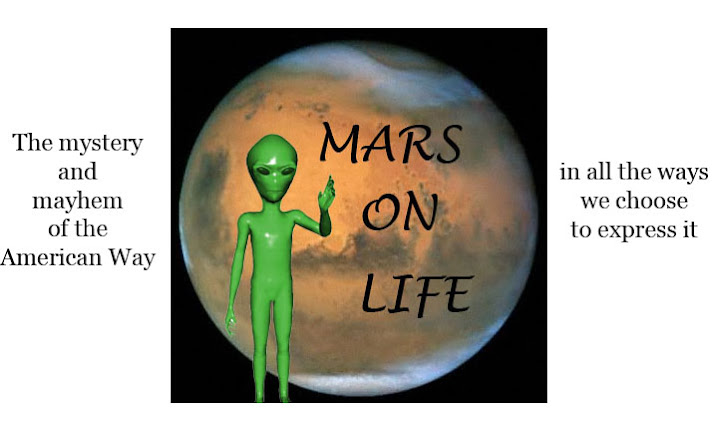Nostalgia is dangerous ground. Without signs that read "Proceed with caution," there's a real risk of sinking up to one's neck in mawkishness and ridicule. It happens all the time in fashion; the creative becomes the freakish and the sublime turns into the sentimental.
Take Ultrasuede, for instance. This wash-and-wear synthetic found its most advantageous employment in No. 704, a shirt-dress ür-fashion designed by the late Roy Halston Frowick.
In the 1970s, Halston the designer became so indelibly linked with celebrity disco culture that it was impossible to separate the man from the media machine. He dressed them all, fat or thin: Bianca, Liz, Liza, Babe, Jackie, Nan. He dressed them in the straight and narrow and he dressed them in the bulbous and billow. Bianca wore a red Halston when she rode her white horse onto the dance floor of Studio 54 and Liz donned the same bright hue to roll her large landmass across the cover of People.
The Halston manifesto was ubiquity draped in a special brand of American decadence. Wearing a Halston jersey or Ultrasuede dress meant that one sacrificed one's individuality to the uniform needs of the herd. It also meant acknowledging that idiosyncrasy wasn't always a viable stylistic option.
Women who wore Halston were not meek, diffident types. They wore the arrogance of remove at a time when looking disinterested was the chicest accessory of all and materialism the next best thing. Manhattan was their snowglobe, a toy biosphere turned white by the powder of cocaine.
The party lasted until they pulled the money from the walls. Uncle Sam has a bad habit of breaking up even the most exclusive revelries, and when the curtain came down, it stayed down. By 1980, everything that could be snorted, shot, or sexed had been, repeatedly. Even the media, which had breathlessly tried to crown Halston the first "international" designer (and one with a Made in the U SA label--Iowa! firmly attached), couldn't put the spin back in the supercilious groove.
SA label--Iowa! firmly attached), couldn't put the spin back in the supercilious groove.
Halston never wanted his name to appear on something he himself had not designed. Were he alive today, he would likely marvel at how that name continues to be tossed from from designer to designer in an attempt to restore its former high gloss. In 1973, Halston traded "Halston" for commercial opportunism, while failing to understand that licensing was the biggest play in the game.
Halston the man might also not recognize how fashion has tattered to the point where the classics border on becoming white elephants. The stalwarts of American ready-to-wear are slowly being relegated to the sidelines in favor of hip, young lines whose trademarks are increasingly gloomy tropes. This has resulted in a huge division of customer: the artistically hungry young and that dwindling number of mature adults who prefer their art to hang in the Guggenheim.
Halston the label is back--again--this time under the direction of Marco Zanini, who admitted that his first outing with the label would be necessarily "banal." Zanini has the Herculean task of restoring the label to past significance while at the same time erasing any lingering shame over the J. C. Penney association (a shortsighted financial alliance that Halston himself enthusiastically approved and which cost him his reputation).
Underlying all of this were the twin expectations of legacy and development, somewhat tired demands that began when the label was first brokered thirty-five years ago.
Zanini's shrewdness had him deliberately detour around the emotion of the original label, which is best expressed in a quote by the artist André Breton: "Beauté sera convulsive ou ne sera pas." Beauty will be convulsive or it will not be at all. In avoiding the passion and eroticism implicit in the label's history, however, he created a collection of ellipsis.
Admittedly, while leaving Studio 54 behind there was nevertheless the dance of obligation. The seamless drape of the original was carefully represented, as were neutral fabrics the color of chimney swifts. Zanini showed separates and an open-collared, nubby coat with rope-styled belt. And then he veered into that dangerous sentimental ground: his evening dresses, onesies, and muumus too closely evoked Liz Taylor's bulk-covering schmattes. A model like Pat Ast would have sold their droopiness with one bravura walk, but today's bird-thin counterparts were simply engulfed.
Liz Taylor's bulk-covering schmattes. A model like Pat Ast would have sold their droopiness with one bravura walk, but today's bird-thin counterparts were simply engulfed.
Even in these more rigid times, the key to reviving Halston is personality. Personality is not persona. It appears as if the need to permanently end the Studio 54 hangover caused Zanini to design a collection that was just this side of steam-distilled. One appreciates Zanini's slim margin of error and waits to see what he can do in the future, but for now he leaves us with...
Dot, dot, dot.
Images: Style.com
People cover provided by IMELDA
Title lyrics from "Shattered," The Rolling Stones
Wednesday, February 6, 2008
Halston: This Town's Been Wearing Tatters
Labels:
Halston Fall 2008 ready-to-wear
Subscribe to:
Post Comments (Atom)









13 comments:
I was just pondering a gorgeous vintage Halston but one of my good clients has the same one...I don't want to weird her out.
This is directly oppositional to the lack of concern with repetition that occurred from 1973 through 1980. I don't know that we have another designer who would inspire women to overlook redundancy the way Halston did.
Bet you'd look great in that dress, though!
Considering the hype that’s been building around this the 6th crack at re-launching Halston I think a tactical decision has been taken to deliberately under whelm us! So yes it’s totally a dot, dot, dot situation.
Gucci managed to shake of the shame of over licensing. Whilst Halston isn’t Gucci there is a significant amount of nostalgia swirling around the brand that should Marco strike the right balance…lift-off!
I enjoyed reading the reports of Liza cooing and squawking during the parade. Let’s hope they re unite Halston’s unholy trinity of Liz, Liza and Bianca for S/S 09 parade.
I've never heard of Halston. Sometimes I wonder if the 80's even happened for me - I remember watching Dallas and Knight Rider and LA Law and the A Team, but I don't remember doing anything.
What a great comment, Thom! It just goes to show that the "later" Halston (after he was deposed from his own label) lost a lot of relevance.
His roots were in the disco culture; he and the culture had a symbiotic relationship.
And you weren't born then!
Ellipses . . . on verra.
I really like the look of the new collection, and I would love to have some of it in my closet . . . but what's being offered on Net-a-Porter.com is a bit flat.
It's a Herculean task trying to resurrect Halston from it's entombment in J.C. Penney's mausoleum. (Mmmmm, imagery.)
I hope the necessary "banality" will subside and be replaced by some of the designer's lifeblood.
Your prose are bombastic in the best of ways: "The Halston manifesto was ubiquity draped in a special brand of American decadence." HA!
Anyway a couple of points:
1. On this collection, I think Zanini intentionally played it safe, so as to reel us all in for season after season. perhaps tactical brilliance.
2. I am really interested in the para. where you say this: "The stalwarts of American ready-to-wear are slowly being relegated to the sidelines in favor of hip, young lines whose trademarks are increasingly gloomy tropes. This has resulted in a huge division of customer: the artistically hungry young and that dwindling number of mature adults who prefer their art to hang in the Guggenheim."
This is true, and yet I think there are gray areas here. There are the Alexander Wangs (of this season) and then designers whose abstract negativity I quite like. Not because it feels like genuine angst, but because there is something about their work that allows me to grasp their economic struggle (Boudicca for example).
Does this make any sense?
I have more I want to say, but the shows go on...
I think that the fact that several looks from this collection are already available on Net-a-porter says a lot about the direction this revival is taking.
enc, there was one outfit there that I really loved--it was the one with the large scarf. I amd thrilled that this type of knitwear is coming back outside of Eileen Fisher (meaning, not matronly); when I worked in the cashmere industry it was all I wore.
Riz, I had a lot of mails complaining about Oscar and the ladies who lunch as irrelevant to the current fashion scene. I can sort of appreciate this gripe because my mother is one of those ladies and my niece is one of the remixers. I also think that there is a huge division now--about which more later. I think the stakes are raised. When certain designers seem to play only to the dwindling box seats, it gets noticed and talked about negatively. This really started back in the late eighties and is a cultural reference point I wish I had time to explore further.
c.j.b., that NaP thing smacks of QVC. And look what NaP picked up: a schmatte (granted, most will belt this) and two legacy shirtdresses in 1973's color palette.
SM - I think I grasp what you are getting at, and I think we agree:
The whole construction of 'ladies who lunch' is an ideological label perhaps contrived by the fringe fashionistas and subcultural set, which reinscribes economic privilege where it actually seeks to displace it. The issue for me is not Oscar (who I quite like) and Carolina as the collective site of aesthetic privilege, but in a more mundane sense, perhaps not so much with O, but with Carolina, that her collection in particular was strained, and came off as ostentatious...
Riz, just for historical reference, the expression originated on Broadway,in a song from the Sondheim musical Company ("Ladies Who Lunch"). The lyrics parody and skewer the wealthy uptown socialite who drank away her afternoons at chic watering holes.
Similar anti-heroines appear in the short stories of John Cheever.
The ladies who lunch are generally portrayed in tragic decline, having nothing more to do with their time and money than to make love to gin and gigolos. Their purpose in life has been lost due to a set of conditions in which their husbands view them as superfluous appendages. They generally suffer fairly dramatic nervous breakdowns and their rehabilitation is not specifically addressed.
If you have a moment, I recommend listening to the song! (One must listen, not just read the lyrics.) You will be able to see the designers' perspective in a completely new light. The designers held one end of the lifeline while the ladies struggled to keep their heads above their martinis.
I love that scarf look you mention. I'm hoping that Halston can get us away from the Eileen Fisher boxiness pronto.
Oh, I forgot to mention, that was superb contextual use of Stones lyrics.
Post a Comment